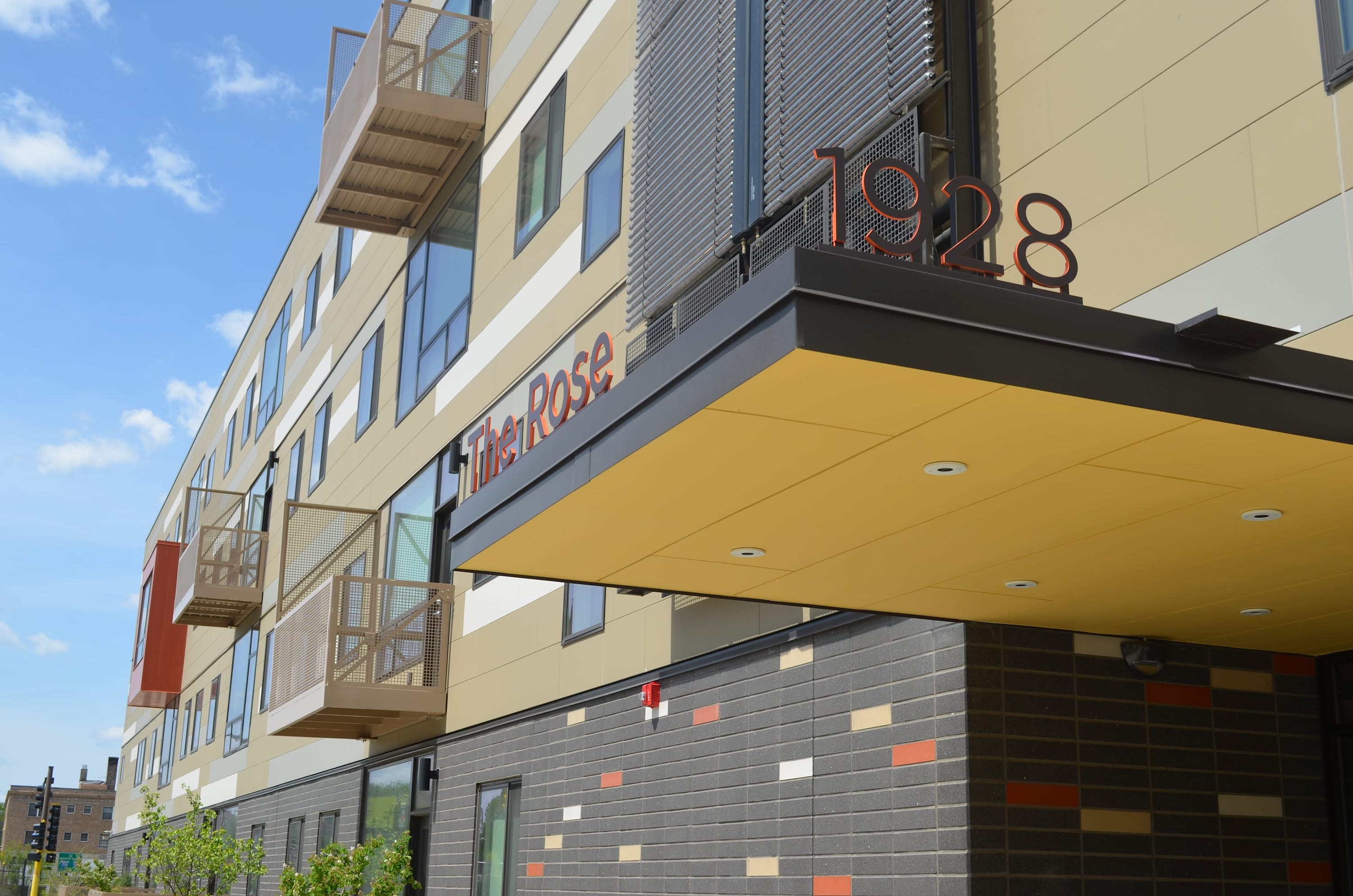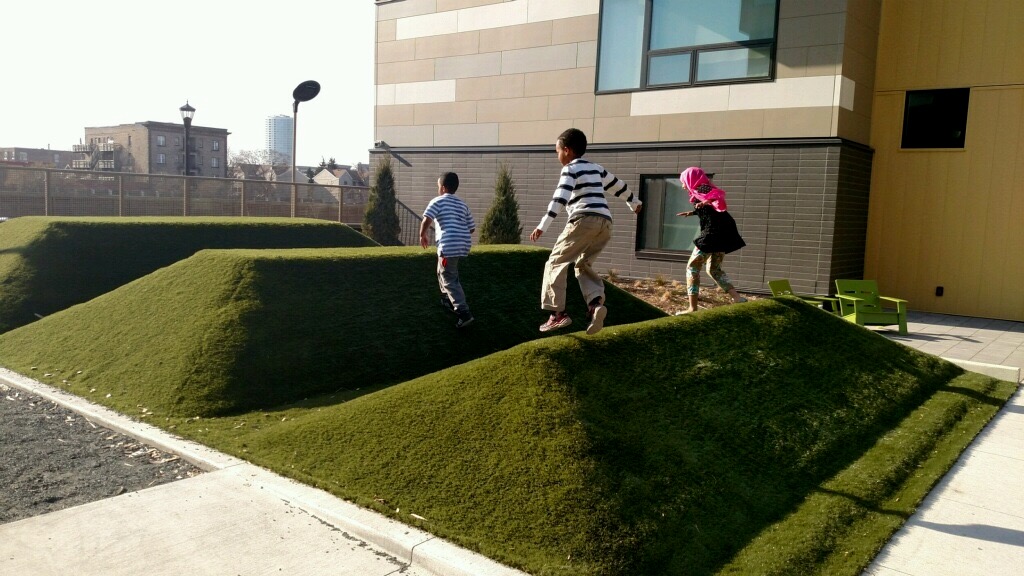Located just south of downtown Minneapolis, The Rose incorporates pioneering green building techniques among its 90 mixed-income (47 affordable and 43 market-rate) apartments, which range from efficiencies to three bedrooms. The Rose is the fourth and final phase of the 15-year Franklin Portland Gateway Project’s South Quarter redevelopment initiative that began in 2001, developed jointly by nonprofit community developers Aeon and Hope Community, Inc. The developers’ commitment to innovation and cost management resulted in what is considered one of the most environmentally sustainable, affordable apartment projects in the United States.
Aeon is developer, owner, and manager of 2,750 affordable apartments and townhomes in the Twin Cities metropolitan area. Hope Community is a neighborhood organization that owns and manages several affordable multifamily properties near the site, focused on creating racially equitable opportunities for community health, housing, education and economic development.

The Rose’s two four-story buildings on 1.65 acres are organized around a 70-foot wide courtyard. A 5,000-square-foot community garden is located on the northeast corner of the block. Ninety underground parking spaces connect both buildings, and 23 surface parking spaces are also available.

The affordable units are for households earning up to 30 percent, 50 percent and 60 percent of the area median income (AMI), or about $18,000 to $51,000 per year. Twelve of these apartments are designated for individuals and families experiencing long-term homelessness.
The project aspires to meet the International Living Futures Institute’s Living Building Challenge (LBC) as a sustainability guideline. LBC poses an aggressive standard for sustainable design that aims to achieve net zero energy and water consumption. An integrated design process was important in achieving the property’s sustainability and included ongoing conversations with architects, engineers, contractors, and residents. The project is the first affordable multifamily housing project to register with the LBC.
Sustainable features include:
- Building orientation that maximizes solar energy production
- High-efficiency ventilation and indoor air quality system
- Healthy, non-toxic building materials
- Solar thermal panels on the south wall of each building to provide approximately 35 percent of annual hot water needs
- A rain garden
- Onsite stormwater treatment
- A series of underground cisterns for water retention and reuse in irrigation
- Separate electric meters for each unit, to allow for individual monitoring and charging for use
- A solar-ready roof for potential electricity generation
- A building envelope with materials, wall systems, and window types that achieve energy efficiency
Multiple sources of funding for the $35.6 million project helped to drive The Rose’s ambitious sustainability goals. The U.S. Bancorp Community Development Corp. provided equity for 9% federal Low-Income Housing Tax Credits. Other major funders included the Minnesota Housing Finance Agency, Hennepin County and the city of Minneapolis. The state, county, city and Metropolitan Council supported the project with gap financing and public funds needed to develop affordable housing.
The developers decided to invest additional monies beyond typical architectural fees to make The Rose a model of sustainably built affordable housing. They believe the pay off in replicability for future projects was worth the increase in upfront costs.

Efforts to maximize the energy savings from green building design also require the engagement and knowledgeable participation of the residents. Resident engagement and education on how to use fixtures such as programmable thermostats or monitoring water use have also been essential elements in achieving energy-efficiency goals.
For more housing affordability resources, including the full case study on The Rose development, visit nahb.org/housingforall and the Land Use 101 toolkit at nahb.org/lu101. The toolkit also includes access to the full How Did They Do It? report.

